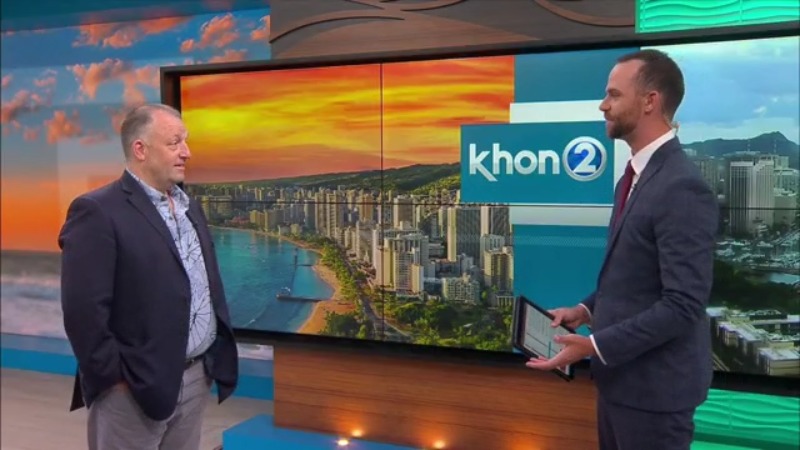HONOLULU (KHON2) — Following a string of power outages that have impacted residents of Oahu and the Big Island, particularly in 2024, questions remain about the reliability of Hawaiian Electric’s power grid. The most recent high-profile outage left downtown businesses, residents, and government buildings without power for over 9 hours last Thursday.
Hawaii Governor Josh Green joined Wake Up 2Day Monday to talk about that and other issues facing the islands.
“As we go through the settlements, which we should do to make sure people are made whole and cared for in Maui, the question will be do we end up seeing HECO hobbled?” Governor Green asked. “Or will they have enough resources to care for the whole state? And so my team is working kind of feverishly to make sure that the settlements are both kind and generous to anyone who struggled or suffered on Maui, and that we can go forward as a state. The rolling blackouts are a concern, HECO is going to have to have money if they’re going to continue to be our essentially primary energy team. So the settlement will tell the tale going forward, I have to be mindful of that because I can’t leave us in a position where HECO is too weak to do all of the renewable energy. Even my own office over at the State Capitol didn’t have power once last week. So we’re kind of right at the tipping point, we’ll solve the problem.”
Fortunately, power outages didn’t have a large impact on the Festival of Pacific Arts and Culture, which Governor Green and First Lady Jaime Green attended frequently during its time in the islands.
“All the thanks go to Aaron Sala and Makanani, his wife, and Jamie and all their teams. It was amazing. We had anticipated maybe 50 to 60,000 of our own people going to visit the many exhibitions and performances. We ended up having over 500,000 of us went and just people came together. It brought the Pacific together, unlike ever before in Hawaii, so I’m grateful.”
The events were incredible. The venues were stunning. A venue that we didn’t have to feature is the new Aloha Stadium.
“I’ll give you the final decision within the next two weeks,” Governor Green said of a chosen developer of the project. “It looks good. We have a fantastic plan. And it looks like the choice that appears to be getting made in the next few moments is going to be a great one for us. I would love to see having a stadium in the future for all of Hawaii. Look, that was probably the one thing that we could have filled. I can’t believe I’m saying this, but we could have filled a 25,000 or 30,000-person stadium for FestPAC because it was so popular. So I’m grateful for the event we just had. We did the convention center with Albizia trees and the hales and all the 3000 delegates that came from 25 nations. But we probably could have also filled a stadium.”
Meanwhile, recovery efforts on Maui continue with the building of temporary housing near Lahaina at Kilohana and Ka Lae Ola.
“So now 93% plus of the people that were in hotels have gone they’re now staying in long-term housing, but we have 450 units that the state’s building 169 that the feds are building right in the same area. I’d like to move people out of long-term rentals into those houses because it will be more affordable for our people. It won’t draw down tax dollars at all. So those who didn’t qualify for FEMA, some of them will go in there others that FEMA feels are better suited in small houses will go. And then over time, and you’ll hear me announce this in the coming three months, we’ll have details about a large housing bill that we’d like to plan with the blessing of the people of Maui for anyone who lost their home. And that’s very important because, over the next three to five years, we have to build thousands of houses. So people will go into these transitional houses. We have 1,044 transitional houses teed up to be built, very affordable, the price point is way lower than a traditional house, it’s like closer to 200 grand a house. Those will then be usable for other things like workforce housing later, but permanent housing is going to be where it’s at. And we need to make sure that through the settlement, we build permanent housing. That’s my plan.”
